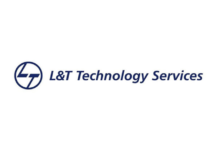
As we head into 2025, the technology landscape continues to evolve, and cloud repatriation is becoming a hot topic for businesses worldwide. While 94% of enterprises already use some form of cloud services, recent surveys reveal a shift: over 48% of companies are now considering or actively moving certain workloads back on-premises or to private clouds. According to a 2023 IDC report, around 80% of companies expect to repatriate some of their cloud workloads within the next two years, citing rising cloud costs and data sovereignty concerns as primary drivers. With these figures in mind, it’s clear that cloud repatriation is more than a passing trend. The question is: Will it gain even more traction in 2025?
What’s Driving Cloud Repatriation?
Several factors are pushing companies to bring workloads back to on-premises or private clouds:
- Cost Control: While cloud pricing is predictable, costs can quickly escalate for unprepared businesses. On-prem solutions can be more cost-effective for stable, predictable workloads.
- Data Sovereignty & Security: With stricter data protection laws (e.g., GDPR, CCPA), many organizations prefer to keep sensitive data on private servers for better security and compliance, especially in regulated industries.
- Advancements in On-Prem Infrastructure: Innovations in hyper-converged infrastructure and management tools make it easier to manage on-prem environments, simplifying the transition for IT teams.
Benefits of Cloud Repatriation
- Improved control over data, its security, and sovereignty: By bringing workloads back to on-premises or private clouds, companies can gain more direct control over their data, ensuring that it aligns with internal policies. For organizations dealing with sensitive data or operating in heavily regulated industries, repatriating workloads to on-premises environments can provide better security and compliance controls, reducing the risk of data breaches or non-compliance.
- Predictable costs: Repatriating workloads can provide more predictable and stable costs, especially for businesses that had trouble managing unpredictable cloud bills. On-premises infrastructure may offer better long-term cost efficiency for certain workloads.
- Enhanced performance for specific workloads: Some high-performance applications, such as those requiring low latency or massive computing power, may benefit from being housed on private servers where resources are more readily available.
- Customization and flexibility: When managing workloads on-premises or in a private cloud, businesses can tailor infrastructure and configurations to meet their unique needs, without the constraints of a public cloud provider’s environment.
Will Cloud Repatriation Gain Momentum in 2025?
Will 2025 see cloud repatriation become the norm? Industry experts have mixed opinions. While for some large enterprises, repatriating critical workloads has clear benefits, many small to mid-sized businesses may prefer hybrid models that allow them to strike the right balance between public and private cloud environments. Furthermore, as cloud providers innovate with cost management tools, more companies may find ways to stay in the cloud while controlling expenses.
What’s Next?
As organizations refine their cloud strategies, it’s likely we’ll see a trend of selective repatriation in 2025. Businesses will assess workloads individually, repatriating only those that benefit from in-house control while maintaining the rest in the cloud. Whether cloud repatriation becomes a widespread trend or remains limited to specific use cases, one thing is certain: the conversation around cloud strategy is evolving. As companies plan for the future, they will need to weigh the benefits of cloud flexibility against the control and cost advantages of private infrastructure and find the balance that best suits their unique needs.
Also read: Viksit Workforce for a Viksit Bharat
Do Follow: The Mainstream formerly known as CIO News LinkedIn Account | The Mainstream formerly known as CIO News Facebook | The Mainstream formerly known as CIO News Youtube | The Mainstream formerly known as CIO News Twitter
About us:
The Mainstream formerly known as CIO News is the premier platform dedicated to delivering the latest news, updates, and insights from the CIO industry. As a trusted source in the technology and IT sector, we provide a comprehensive resource for executives and professionals seeking to stay informed and ahead of the curve. With a focus on cutting-edge developments and trends, The Mainstream formerly known as CIO News serves as your go-to destination for staying abreast of the rapidly evolving landscape of technology and IT. Founded in June 2020, The Mainstream formerly known as CIO News has rapidly evolved with ambitious growth plans to expand globally, targeting markets in the Middle East & Africa, ASEAN, USA, and the UK





